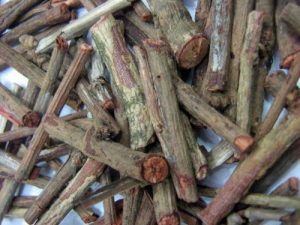 Detoxifying herbs are a great compliment to any cleansing program to heighten the results, but they can also be beneficial to take in smaller dosages for daily health and maintenance. Whether taking them for either purpose, it is important to chose the ones that are specific for your individual needs, current imbalances and overall constitution (Prakrtti). As you will see, not all detoxifying herbs are made the same. In fact, each herb possesses special energetics and healing properties that makes it unique when compared to the others. So if you are looking for a detoxifying herb that is more specific for cleansing the liver, killing unwanted parasites or increasing digestion and elimination; this article will help you to decide which herb(s) may be the best options for you and your needs.
Detoxifying herbs are a great compliment to any cleansing program to heighten the results, but they can also be beneficial to take in smaller dosages for daily health and maintenance. Whether taking them for either purpose, it is important to chose the ones that are specific for your individual needs, current imbalances and overall constitution (Prakrtti). As you will see, not all detoxifying herbs are made the same. In fact, each herb possesses special energetics and healing properties that makes it unique when compared to the others. So if you are looking for a detoxifying herb that is more specific for cleansing the liver, killing unwanted parasites or increasing digestion and elimination; this article will help you to decide which herb(s) may be the best options for you and your needs.
Before we move on, it is always important to note that these articles are to help educate; however, I am not a promoter of self-diagnosis, nor self-treatment when it comes to herbs. You see, even though an herb sounds great on paper, you may still not know the dosage to take it in, or if you should combine it with other herbs to balance off any harsh effects that the herb may possess (or even avoid it all together). For example, Neem is an incredibly cleansing herb and is great in the proper context. Unfortunately, it is also extremely drying and provoking to Vata, and therefore should not be taken by those with a strong Vata imbalance.
This is only one example, but all herbs have the power to either heal us or to create further imbalance. And so in conclusion, it is best to eventually find a knowledgeable practitioner to help guide you in these types of situations. So with that being said…
7 Powerful Ayurvedic Herbs for Detoxification
1. Manjistha
Specific Uses: Blood cleanser; treats skin disorders; beautifies complexion
Manjistha is a great option for detoxification when it comes to Ayurvedic herbs, especially for Pitta types. Manjistha is a bright red root and as its color may indicate, its main action is to cool and cleanse both the blood and liver. It is also highly revered for its ability to beautify the complexion and is often used to treat most skin disorders including acne, redness, rash, eczema and psoriasis. Some other special properties you can find with Manjistha is its ability to break through obstructions (tumor, stones, toxins, etc), promote healthy circulation, heal wounds and mend broken bones.
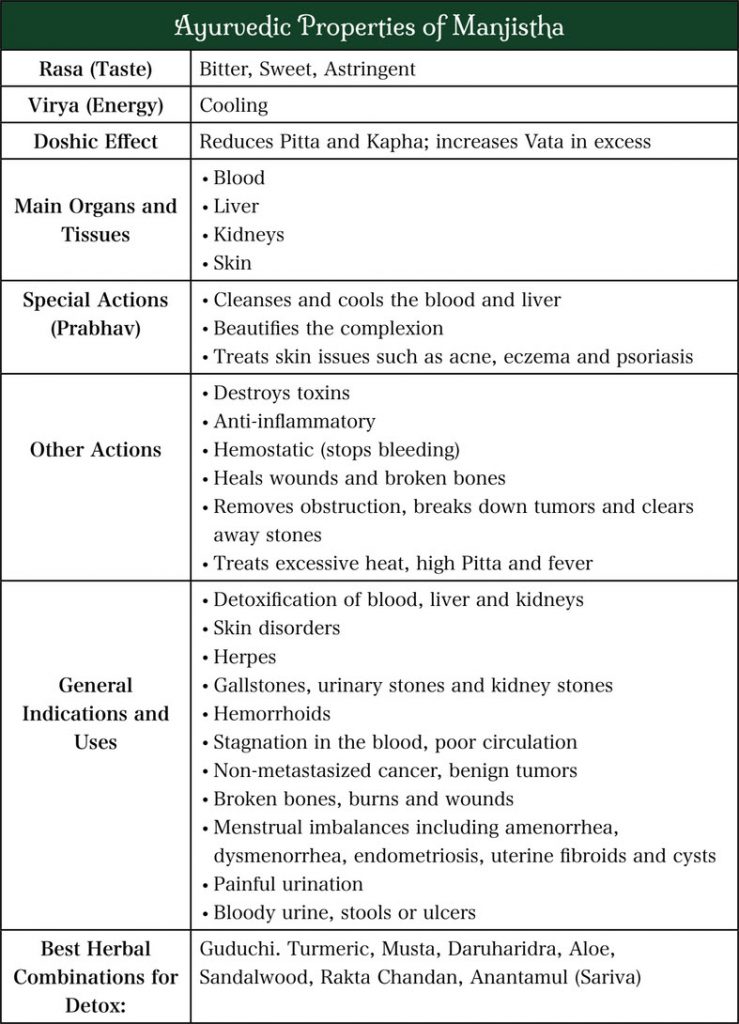
2. Vidanga
Specific Use: Treat parasitical infestation
Vidanga is Ayurveda’s top anti-parasitical herb, making it a must for a well-rounded detoxification formula. Whether it is an unwanted parasite, worm, bacterial or fungal infestation, Vidanga is essential to combat these invasive guests. Although it is not commonly talked about in the West, these issues are all very real for many people, and unfortunately often go undiagnosed and therefore untreated.
Some common symptoms of parasites (of all kinds) include chronic gas, bloating, cramping, constipation, diarrhea, sugar cravings, heavy coating on the tongue, vertical lines on the nails (showing malabsorption), pink and puffy around the nails, chronic low energy, poor digestion, poor absorption of nutrients, and an overall feeling of unwell for an extended period of time. Since parasites are hard to detect at times and often go undiagnosed, it is typically a vital herb to include for any cleansing program.
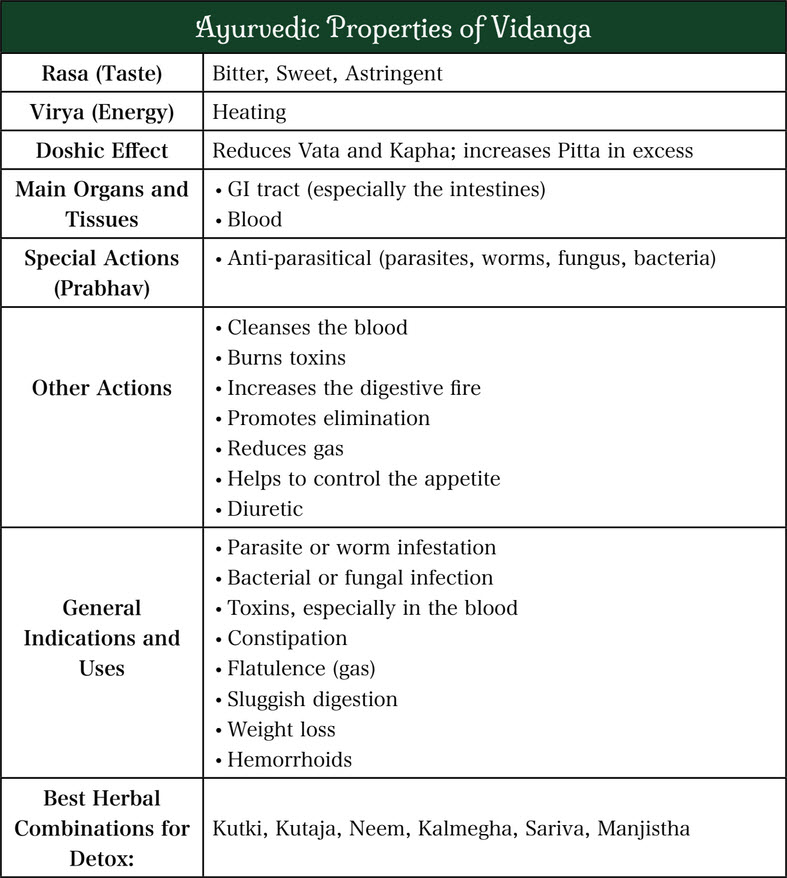
3. Kutki
Specific Use: Detoxify and strengthen the liver
Perhaps one of the most beneficial herbs for strengthening and cleansing the liver, Kutki (aka Katuka) is an essential player in many Ayurvedic detox formulas. As with many cleansing herbs this Indian root is extremely bitter in taste, giving rise to its cooling, anti-inflammatory and antimicrobial properties. Besides being a must-have liver tonic and blood cleanser, Kutki is generally used for reducing Pitta imbalance, alleviating skin disorders, promoting elimination, aiding in weight loss, stabilizing blood sugar, treating allergies and boosting sluggish digestion.
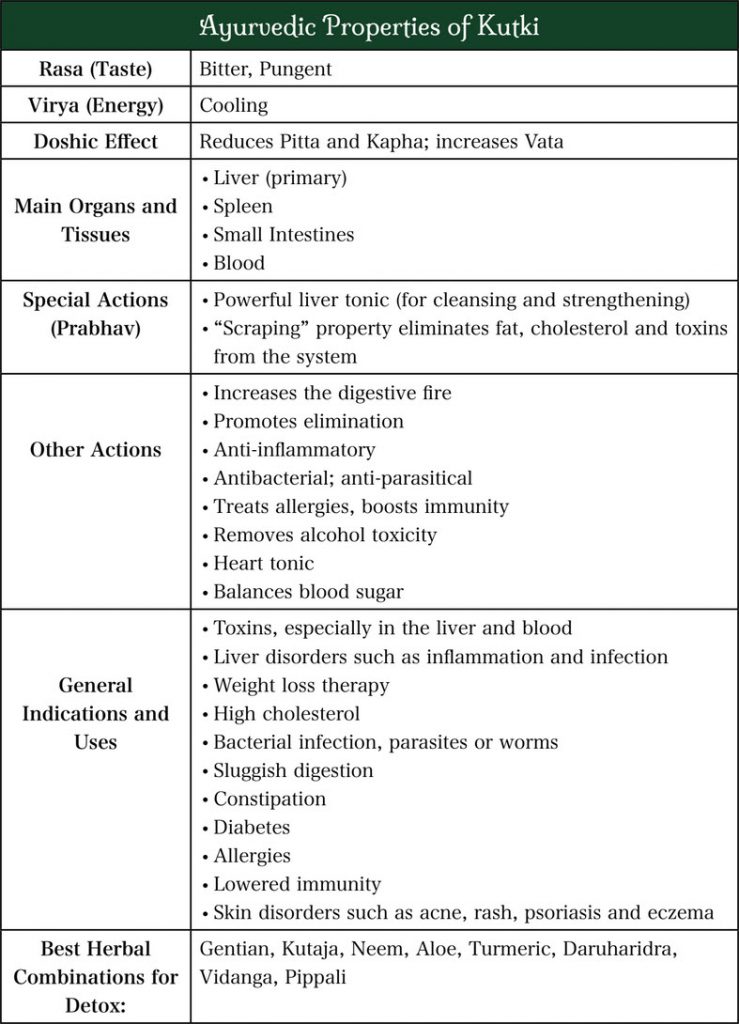
4. Guduchi
Specific Uses: Cleanse liver and blood; anti-inflammatory; balance Pitta
I have chosen to add Guduchi to this list of powerful detox herbs, not only because it is just that, but also because it is much more “gentle” in action and therefore is often used in higher dosages without any harsh effects. Unlike any of these herbs mentioned before, Guduchi is tri-doshic by nature, meaning it is beneficial for all doshic types and imbalances. Although it is heating in action, it is a main herb for treating many Pitta disorders; and although it is quite cleansing, Guduchi also is known as a rejuvenative (rasayana) as it helps to promote strength, immunity and longevity. Although I can go on and on about this amazing herb, I will just end by mentioning that another special trait of Guduchi is the effect it has to calm the mind and promote the intellect, making it again unique from its detoxifying “peers”.
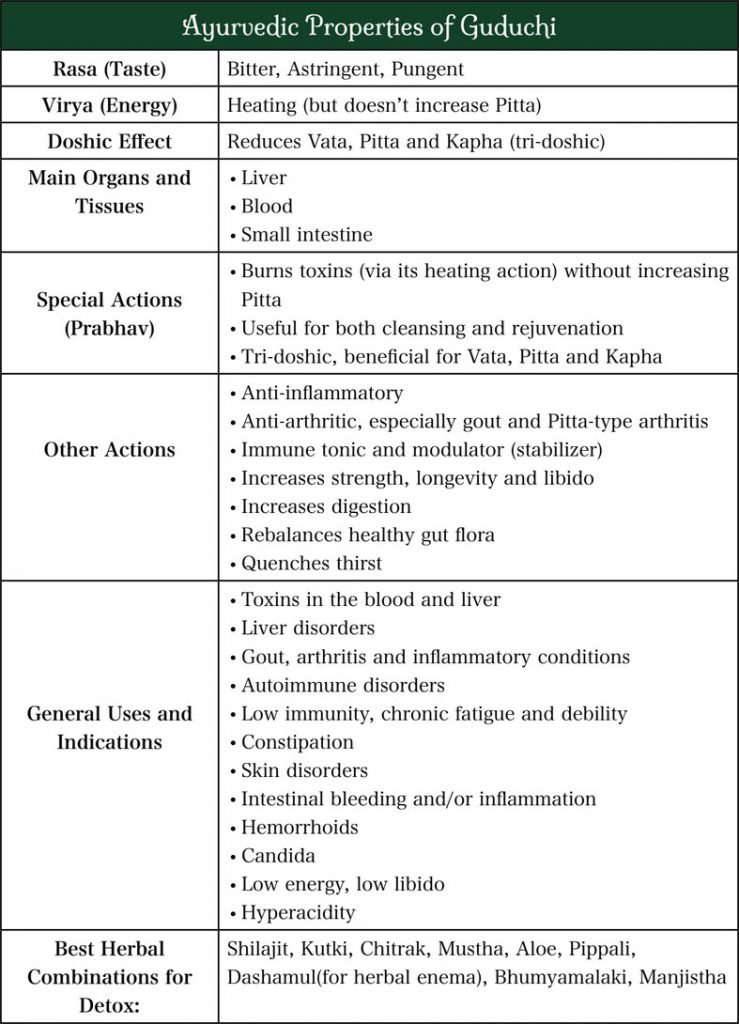
5. Chitrak
Specific Use: Increase digestive fire (Agni) and metabolism
When looking to detoxify the system, one must always look to increase the digestive fire simultaneously. Therefore, no detox formula is truly complete without a powerful Agni-kindling (aka digestion boosting) tonic. Chitrak is quite possibly the best herb available in Ayurveda for this purpose. Chitrak is often used for all types of sluggish or weak digestion issues, including gas, bloating, cramping, constipation, slow digestion (Manda Agni), slow metabolism, dull appetite and sleepiness after food. Although its main use is to boost digestion, Chitrak also is useful for burning toxins, cleansing the blood, removing stagnation, treating many intestinal disorders and killing parasites.
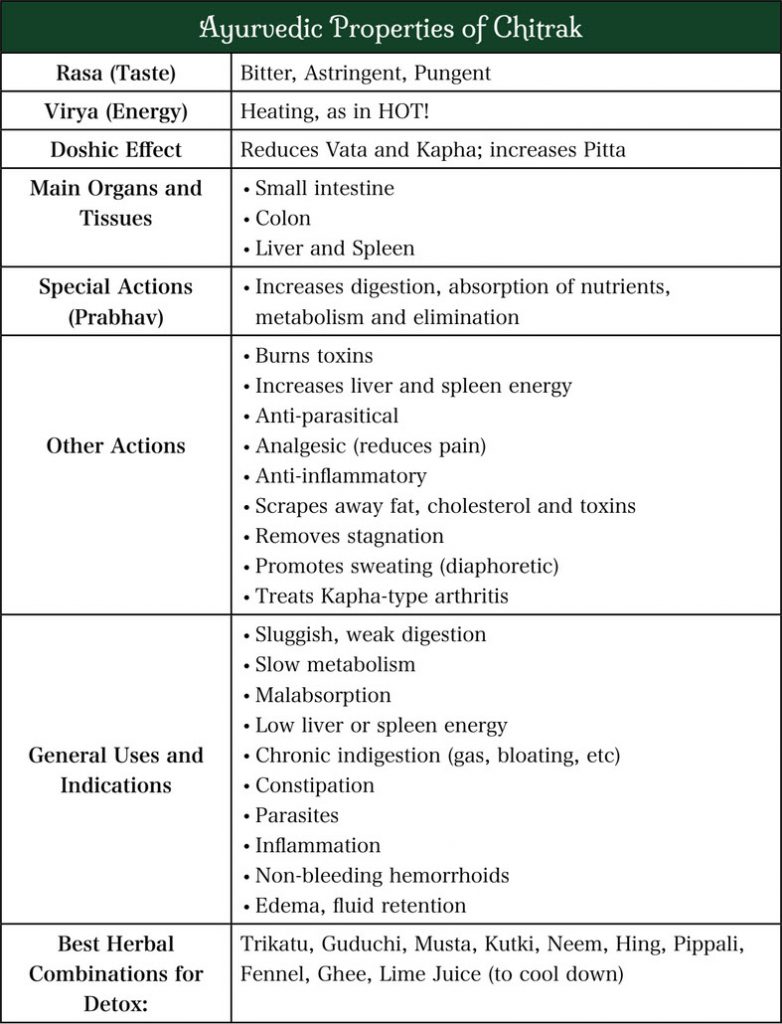
6. Neem
Specific Use: Liver and blood cleanser; skin and eye disorders
A bit more well known, the bitter Neem leaf is yet another must-have for this detoxifying herb list. Although you will not need much, this bitter tonic carries powerful blood cleansing properties along with notable anti-parasitical, antimicrobial and anti-inflammatory actions. Neem has an affinity for both the liver and the blood, making it a great option for skin disorders, especially with a Pitta involvement (i.e. rash, irritation, redness, acne, eczema, psoriasis). Its cooling nature also helps with treating Pitta in the GI tract, and is useful for alleviating hyperacidity, nausea, vomiting, ulcers, colitis, gastritis, diarrhea and Crohn’s disease. If this isn’t enough , it is also a main Ayurvedic herb for treating the invasive Candida (among other fungal and bacterial infestations), due to its potent antimicrobial nature.
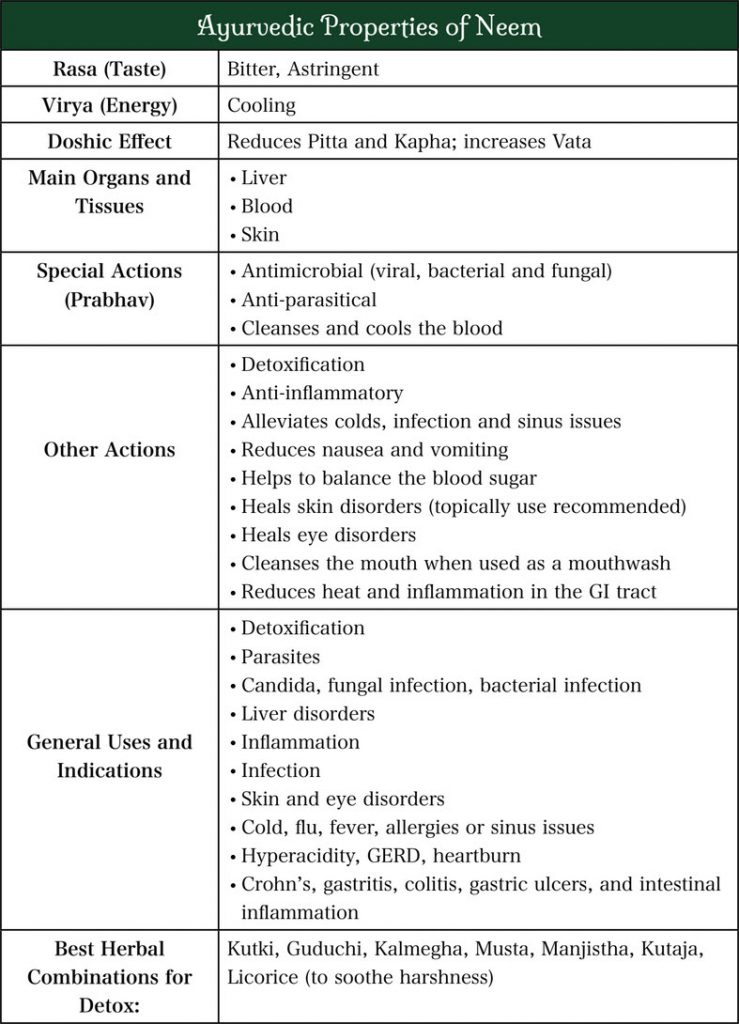
7. Mahasudarshana
Specific Use: Detox deep-rooted toxins; anti-inflammatory; antimicrobial (bacteria, virus, fungus, parasites)
Last but definitely not least, I leave you with not just a detoxifying herb, but an insanely detoxifying formula that has been used traditionally for thousands of years. Mahasudarshana is the equivalent to an herbal antibiotic (and beyond), as it is used to treat a wide variety of bacterial, viral and fungal infections. This Ayurvedic formula is made up of some of the most powerfully cleansing herbs in the Ayurvedic Pharmacopia and its list of health benefits go on and on.
Besides detoxification, this formula is used for killing unwanted parasites, treating infections, flushing out the lymphatic system, alleviating allergies, boosting immunity and even reducing sweet cravings. Some of the main herbs in this formula include the very herbs we have just discovered in this article such as Neem, Kutki, Vidanga, Guduchi and Chitrak. Other main ingredients in Mahasudarshan include Chirata, Kutaja, Triphala, Trikatu, Musta, Turmeric, Daruharidra and Bhumyamalaki, making this one of the most bitter, cleansing and antimicrobial formula available in Ayurveda.
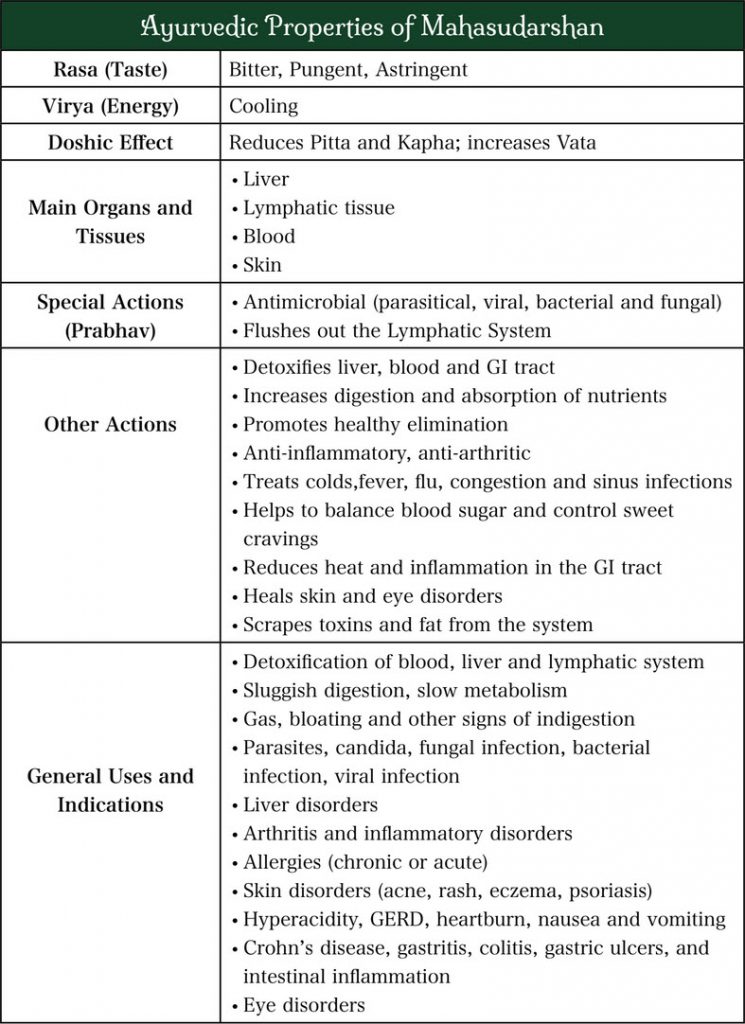

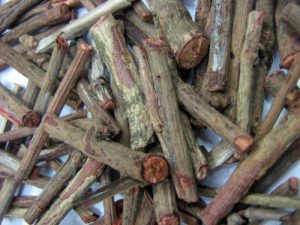

Kutki is better & gives good results i use kutki
Hi I am with vata constitution and i am currently taking vidanga and neem as per one of your recipes for parasite infection. I have taken some triphala tablets as well for the past few month. I have taken the large dose of vidanga and neem (1 week as per your recipe) and now i have reduced to 1/4 tsp vidanga and 1/8 neem. My question is can i still take triphala along with that or is it too strong? Thank you very much in advance
Hi Elitsa,
Thank you for your question. The Triphala can be taken indefinitely, even for Vata types. It is tridoshic and non-habit forming. In fact it is a unique formula that can be taken for one’s entire life. The Neem and Vidanga can be a bit strong for longterm use, especially with Vata constitutions. If you still feel you need to use them for your infection, I would recommend adding in Ashwagandha and Guduchi to help to stabilize the Vata. You can blend 3 parts Ashwagandha, 3 parts Guduchi, 2 parts Vidanga and 1 part Neem. Take this blend as 1/2 tsp, three times daily before meals. If Vata still becomes increased overtime (insomnia, anxiety, etc), then this formula should be reevaluated as needed. Since it is currently Vata season, this should be monitored even more carefully. I hope this helps!
Namaste,
Danielle
Awsome – this gave me so much clarity
I am so happy to hear, Almarez!
Please let me know if any questions come up and I will be happy to help.
Be well:)
Namaste,
Danielle
hi
I have execissive gas and burping issue, what should i take for enema
Hi Ami,
Thank you for your question! Gas and bloating is a Vata issue and the best enema for Vata is generally Dashamula basti. The Dashamula formula is a grounding “10 root” formula and is useful in all Vata conditions including Vata-type digestive imbalances. You can read more about the Ayurvedic enema here.
Be well:)
Namaste,
Danielle
I am of vata constitution currently experiencing vata-pitta imbalances along with excess weight and looking for a well rounded detox herbal blend. I recently stopped breastfeeding after a span of 6 years, have had my gallbladder removed after giving birth to my first child and I experience constipation, gas and bloating, sluggish digestion, carry excess weight around my midsection on my small 5’1″ frame, brain fog, sugar cravings, insomnia, stress, creaky joints. These symptoms all seemed to continually worsen after my 2 pregnancies and having my gallbladder removed. Now that I am no longer nursing I would like a fresh restart while of course incorporating diet, exercise and lifestyle changes.
I’d really like some herbal detoxification support that addresses my symptoms along with antiparasitic support. Would Mahasudarshana be ok to use or would you be able to suggest another herbal combination and in which ratio? Apologies for the long post. Thank you in advance.
Hi Ebony,
Thank you for writing in with your story. I am sorry you have had such a hard time with your health after the birth of your two babies. Pregnancy can be very hard on the body and it is true that your body will never be quite the same after giving birth. That does not mean you have to suffer for the rest of your life however, and with the proper diet, lifestyle, and herbs, you can begin to regain your health and start again fresh!
From the information you have shared, I would suggest starting with the Daily Detox Formula (1/2 tsp before each meal) to get the digestion and metabolism stronger, strengthen and cleanse the liver, kill off any potential parasites, and flush accumulated toxins from the system. The Mahasudarshana Churna is great for this as well, but it is very bitter and has the potential to disturb Vata with ongoing use. The Daily Detox Formula is more well-rounded and can generally be taken by all dosha types.
You can also accompany this formula with Triphala Churna (1/2 tsp before bed) and Detox Tea between meals. These will complement the Detox Formula well and aid it in flushing toxins and stimulating digestion (without provoking Vata or Pitta).
Let me know if any further questions come up and I will be happy to help.
Many blessigns to you and your family!
Namaste,
Danielle